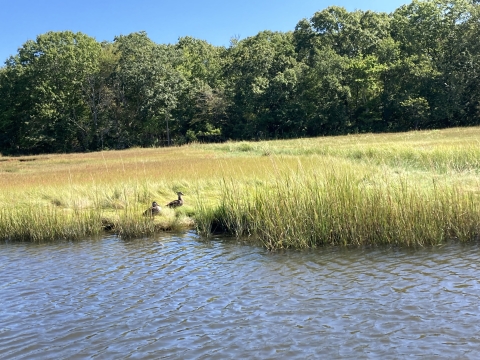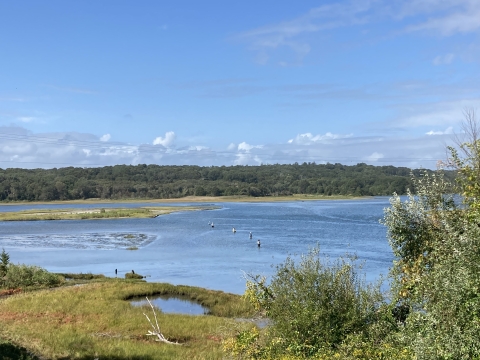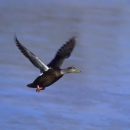Featured Species
Saltmarsh Sparrow
This songbird relies on the high salt marsh salt marsh
Salt marshes are found in tidal areas near the coast, where freshwater mixes with saltwater.
Learn more about salt marsh meadow habitat for cover and nest building. Often, it scurries through the grass like a mouse or vole. When Saltmarsh sparrow nests are damaged by high tides, the most successful sparrows rebuild them. Look for this species in the spring through the summer.
American Black Duck
Often mistaken for the female Mallard, upon closer observation American Black Ducks are primarily chocolate brown, with a pale grayish-brown face, and yellow bill. The John H. Chafee National Wildlife Refuge at Pettaquamscutt Cove is well-known to these migratory waterfowl and was established specifically to protect the population of black ducks that winter there.
Saltmeadow Cordgrass
This grass, also called marsh hay, dominates the high saltmarsh – an area flooded by salt water only at the highest tides. Historically, New Englanders harvested it for cattle feed. Today, its major consumers are insects.
Salt Marsh
The salt marsh is a transitional habitat between land and sea, which is mainly defined by salt marsh grasses and other plants firmly rooted in mud and peat. Most large salt marshes have tidal channels meandering through them, where salt and fresh waters mix with the rise and fall of the tides. Another feature of salt marshes are pannes, which are small pools of trapped water that dot the salt marsh meadows.






